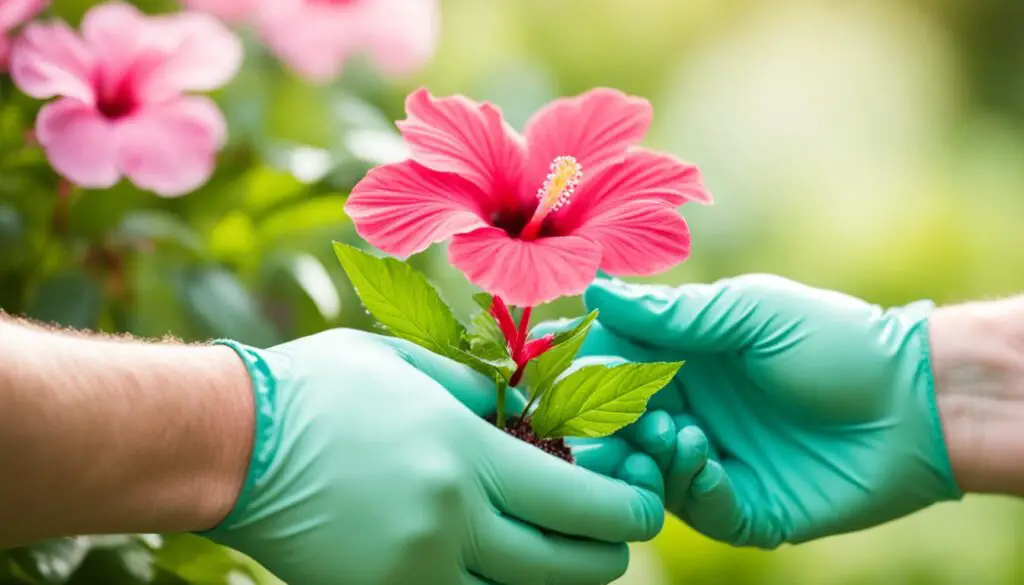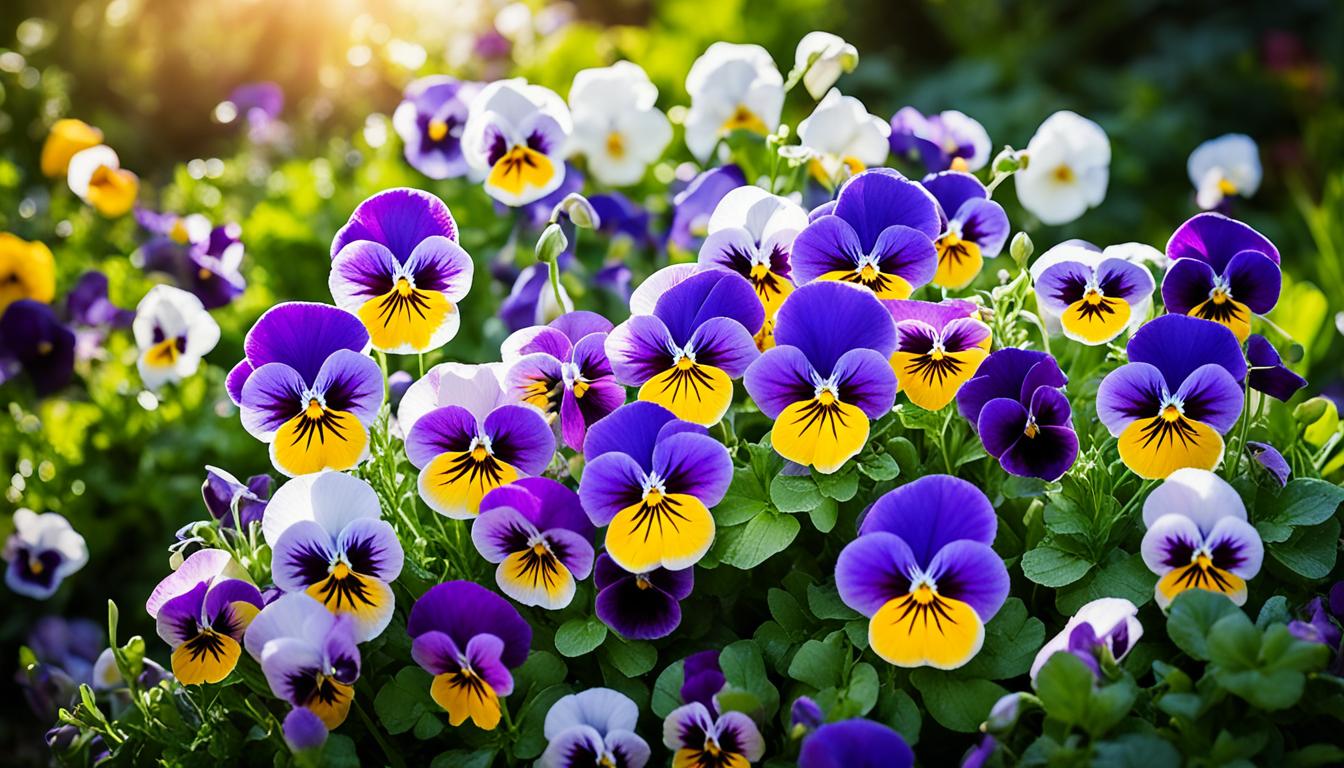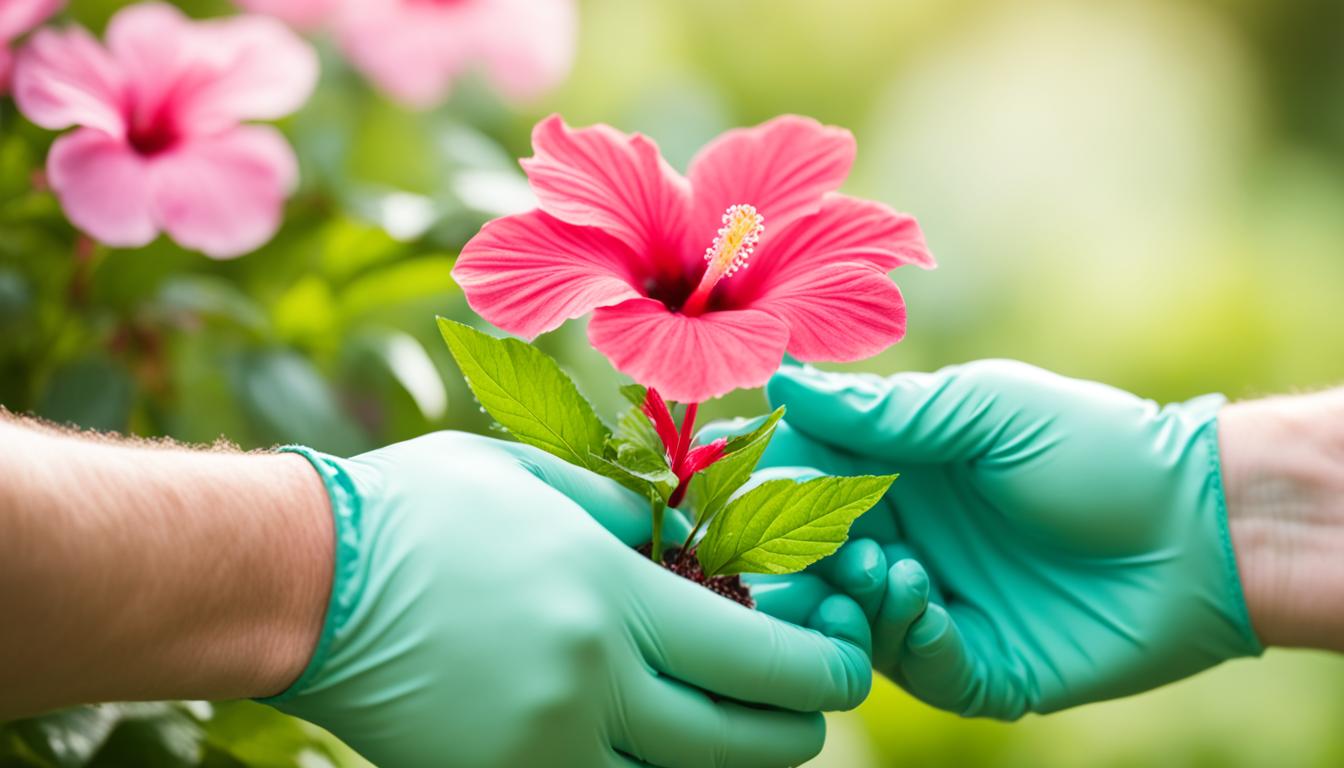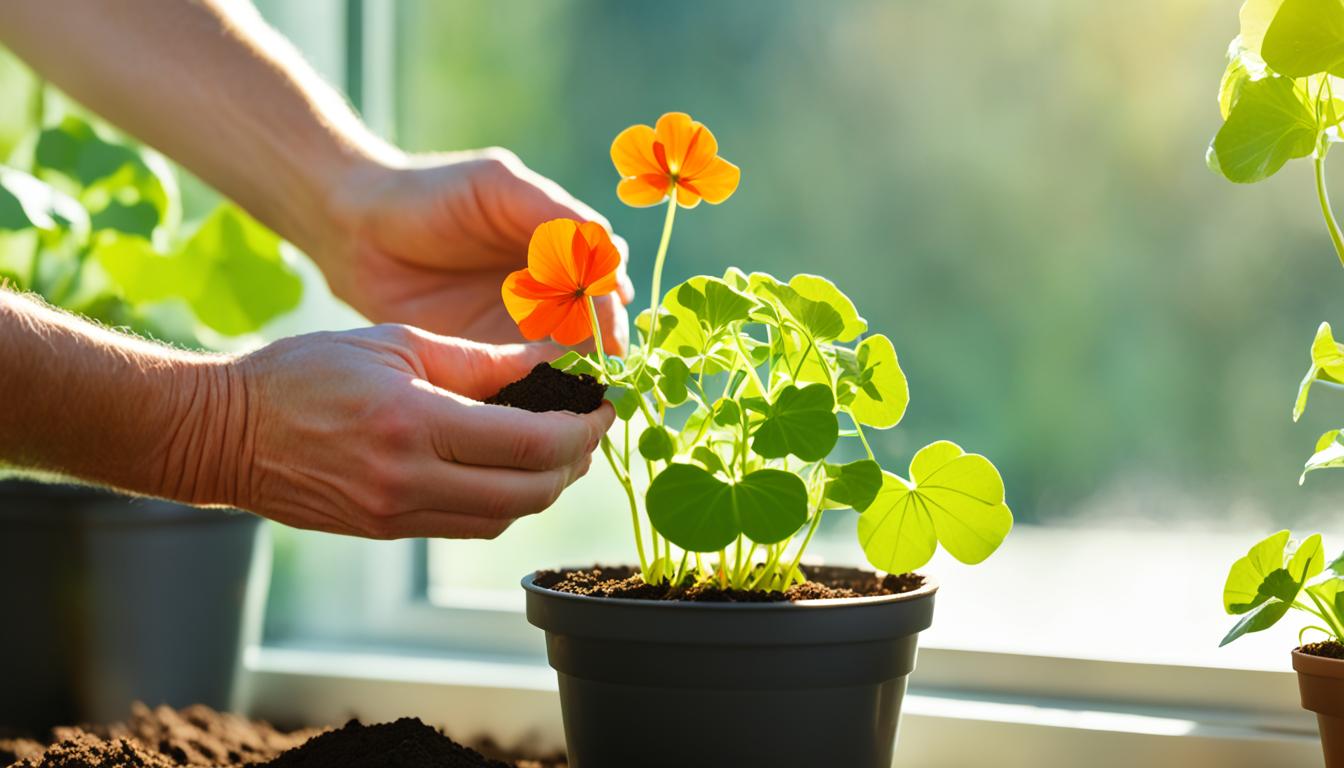Growing hibiscus can be very rewarding. These plants are easy to care for and produce beautiful, large flowers in many colors.
This guide will help you grow and keep healthy, vibrant hibiscus plants. You’ll learn about planting, growing conditions, pruning, and managing pests to enjoy these stunning flowers in your garden.

Key Takeaways
- Hibiscus can be grown in a wide range of zones, from hardy varieties in Zone 4 to tropical varieties in Zones 9-11.
- Proper plant spacing is essential for optimal growth, with Tropical Hibiscus requiring 5′ spacing and Hardy Hibiscus needing 3-4′ spacing.
- Hibiscus thrive in soil rich in organic matter that can retain water and nutrients, and they benefit from ample nutrients through slow-release fertilizers.
- Pruning Hibiscus in late winter to early spring helps maintain their shape and encourage healthy growth.
- Potted Hibiscus require consistent watering and a high-quality potting mix for proper drainage and nutrient uptake.
Planting and Location Requirements for Hardy Hibiscus
Growing vibrant and healthy hardy hibiscus plants is easy with the right soil and planting tips.
These plants love well-drained, acidic soil rich in organic matter. Make sure the soil holds moisture but doesn’t get too wet.
Soil Needs
Hardy hibiscus do best in soil with a pH between 5.5 and 6.5. If your soil is mostly clay, consider using raised beds for better drainage.
Adding compost or other organic matter will help improve the soil’s structure and nutrients.
Ideal Time and Method for Planting
- Plant hardy hibiscus after the last frost in spring or early summer.
- Choose a spot that gets full sun, as these plants need at least 6 hours of sunlight daily.
- Dig a hole twice as big as the plant’s pot, and place the plant so the crown is just at or slightly above the soil.
- Plant multiple hibiscus 2-3 feet apart to accommodate their size, which can be 48 to 72 inches tall and up to 3 feet wide.
Be patient with hardy hibiscus as they may take time to grow in cool springs or early summers. With proper soil and planting timing, you’ll enjoy large, beautiful blooms all season.
How To Grow A Hibiscus and Care
Light Requirements
Proper lighting is key for your hibiscus plants to grow well and bloom brightly. These tropical plants love full sun, needing at least 6 hours of direct sunlight daily. In the north, they do great in full sun. In the south, filtered sunlight helps prevent leaf burn.
For indoor hibiscus, put it in a bright, sunny spot near a window. When moving it outside for summer, slowly get it used to more light to avoid stress.
Keep an eye on your hibiscus and change its light as needed. The right sunlight is crucial for healthy leaves, lots of blooms, and strong growth. With the right hibiscus light requirements, you’ll do great at growing hibiscus and caring for hibiscus.

“Proper light exposure is crucial for healthy growth, vibrant foliage, and abundant blooms.”
Maintaining Vibrant and Healthy Hibiscus Plants
To keep my hibiscus plants thriving, I make sure they get enough water and the right food. These plants love moist, well-drained soil. So, I water them often to keep the soil from drying out.
Feeding them with a balanced fertilizer is key. I use either a water-soluble or slow-release fertilizer, following the instructions. This keeps my hibiscus plants looking great.
Pruning in early spring helps a lot. I cut the stems back to 4-6 inches from the ground. This makes them grow bushier and bloom more.
Watching out for pests like aphids and red spider mites is also crucial. If I see any, I use insecticidal soap to get rid of them.
For my tropical hibiscus, I bring them inside before the first frost. This way, they stay warm and sunny until spring comes back.
With regular watering, feeding, and pruning, my hibiscus plants give me beautiful flowers all season.
FAQ
What are the planting requirements for hardy hibiscus?
Hardy hibiscus love well-drained, acidic soil rich in organic matter. Plant them after the last frost in your area. Dig a hole twice as big as the pot, place the plant in, and make sure the crown is just at or a bit above the soil.
Space each plant 2-3 feet apart for the best growth.
How much sun do hibiscus plants require?
Hibiscus plants need full sun, which means at least 6 hours of direct sunlight daily. In the north, they do great in full sun. In the south, filtered sunlight helps prevent leaf scorch.
Indoors, put your hibiscus in a bright spot near a sunny window.
How do I care for my hibiscus plants?
For healthy hibiscus, keep the soil moist, fertilize regularly, and prune properly. These plants love consistent moisture and well-drained soil. Use a balanced fertilizer, following the instructions on the label.
Prune in early spring, cutting stems to 4-6 inches from the ground before new growth starts.
How do I manage pests and overwintering for my hibiscus?
Watch out for pests like aphids and red spider mites and deal with them quickly. For tropical hibiscus, bring them inside before the first frost. Keep them in a warm, sunny spot to overwinter.



